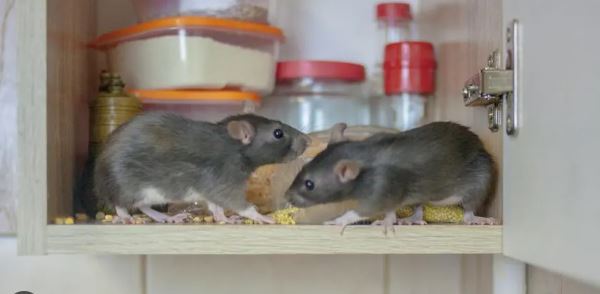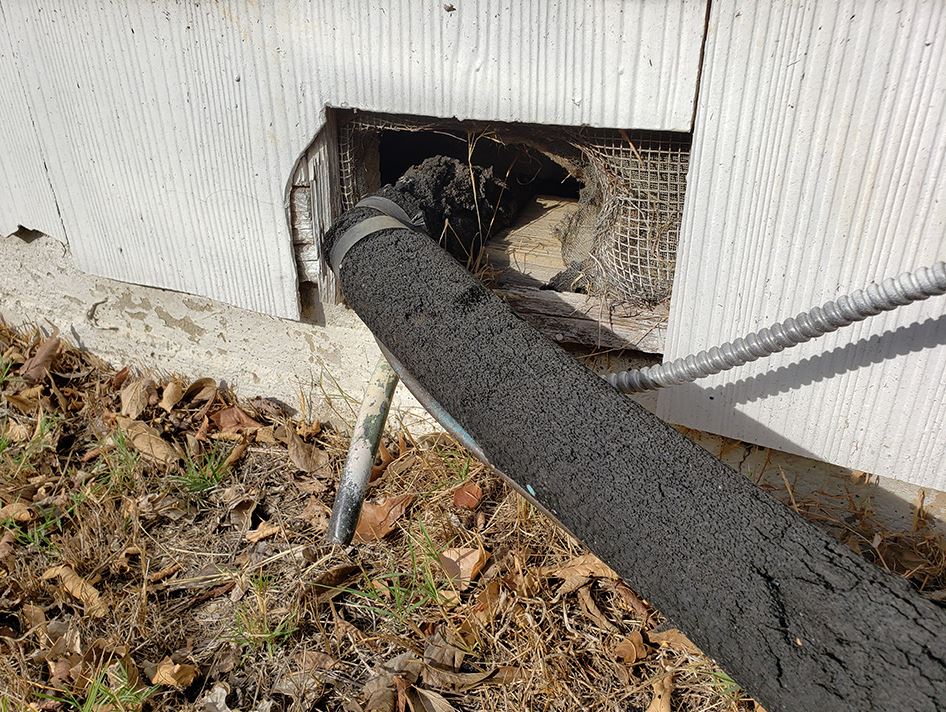Rat Infestations and why Exclusion is important are ongoing questions we hear from our customers. Shoo Fly Pest Control is here to help offer guidance! Rodent control measures remain in high demand year round showing how common these issues are. This is especially true in Santa Rosa, Healdsburg, Windsor and Sonoma County in general.

Rats in particular, have adapted themselves remarkably well to human environments, and are known as commensal pests. This is due to their ability to thrive in urban settings, living close (but unseen…usually!) proximity to humans. Their rapid reproduction rates have led to significant rat infestations in cities, towns, and even rural areas across the country, and notably areas of Sonoma County, including Santa Rosa, Windsor, Healdsburg, Sebastopol, Rohnert Park and Petaluma. To effectively fight back against these infestations and prevent them, the practice of exclusion is just as important as trapping and/or baiting for the rodents. Exclusion refers to the use of repair work that prevents rodents from entering structures and environments, essentially stopping them from getting to places we don’t want them to be in the first place!. In this article, we will look at the reasons behind why Rat Infestations and Exclusion areimportant.
Important Items Contributing to Rat Infestations
- Adaptability: Rats have an impressive ability to adapt to various environments. This adaptability is due to their opportunistic feeding habits, wide ranging diet, and ability to find shelter in a wide range of spaces, from crawl spaces to sewers and to attics. They are most comfortable in the places humans don’t want to spend time in!
- Rapid Reproduction: Rats reproduce at an alarming rate, with a single pair of rats capable of producing hundreds of offspring within a year. This exponential growth can rapidly make infestations grow out of control. This growth rate can make them difficult to control without quick reaction times to a new infestation.
- Human Activities: The abundance of food waste in urban areas such as our Sonoma County neighborhoods gives rats a consistent food source. Cluttered and neglected spaces such as workshops, sheds, detached garages, attics and crawl spaces offer rats numerous nesting opportunities. These are common areas throughout Santa Rosa, and should be the first places we think of when it comes to rodent control.
- Urbanization: The expansion of urban areas often leads to the destruction of natural habitats, forcing rats to seek refuge in human environments. The close proximity of human structures provides rats with easy access to food, water, and shelter. This is commonly seen when a new development starts and a formerly vacant lot is cleared. This usually leads to fresh infestations in the surrounding homes or businesses as rodents search for new harborage.
The Importance of Exclusion Measures
- Health Risks: Rat infestations pose a significant health risk to humans. Rodents are carriers of several diseases, including leptospirosis, hantavirus, and salmonellosis. Their urine, feces, and hair can contaminate surfaces and food, leading to the spread of pathogens.
- Structural Damage: Rats are known for their gnawing and chewing behavior, which helps keep their teeth from overgrowing. Unfortunately, this can also lead to large amounts of damage to buildings, electrical wiring, plumbing, and insulation. This damage may not only compromise structural integrity but also increases the risk of fires, floods and other hazards.
- Economic Impact: Rat infestations can have a profound economic impact on both individuals and communities. The cost of repairing structural damage, replacing contaminated materials, and addressing health concerns can quickly add up and be a significant cost for homeowners or businesses in Sonoma County.
- Negative Public Perception: Rat sightings and infestations can tarnish the reputation of businesses, residential areas, and entire cities. This negative perception can impact reputations, impact customers, reduce property values, and in general harm local economies.
Exclusion Measures: A Comprehensive Approach

- Sealing Entry Points: The first step in effective rat exclusion is identifying and sealing all potential entry points. Rats can squeeze through remarkably small openings, so thorough inspection and sealing of gaps in walls, roofs, foundations, and windows are essential.
- Take care of trash: A major attraction for rats is the availability of food sources. Having proper waste management practices, such as securing trash bins and reducing accessible food waste, can significantly discourage rat populations.
- Maintaining Cleanliness: Regular cleaning and maintenance of structures can help eliminate potential nesting sites and food sources. Cluttered spaces, neglected storage areas, and unkept yards should be addressed to minimize rat-friendly environments.
- Professional Pest Control: When infestations occur, seeking the expertise of professional pest control, like Shoo Fly Pest Control, is critical. These experts can assess the severity of the infestation, develop customized exclusion plans, and implement safe and effective control methods.
- Awareness: Public awareness about rat behavior, infestation risks, and exclusion measures is essential. Keeping a close eye on your property and surroundings is the best way to catch rodent infestations early, before they get out of control. This gives individuals and businesses time to take proactive steps to prevent infestations.
Rat Infestations and Why Exclusion is Important
Rat infestations are not only a nuisance but also a serious threat to human health, property, and the overall well-being of communities. The importance of effective control and exclusion measures are more important than ever as rodents continue to thrive locally. Through a combination of sealing entry points, practicing proper waste management and seeking professional help like Shoo Fly Pest Control when needed, we can significantly reduce the severity of rat infestations.